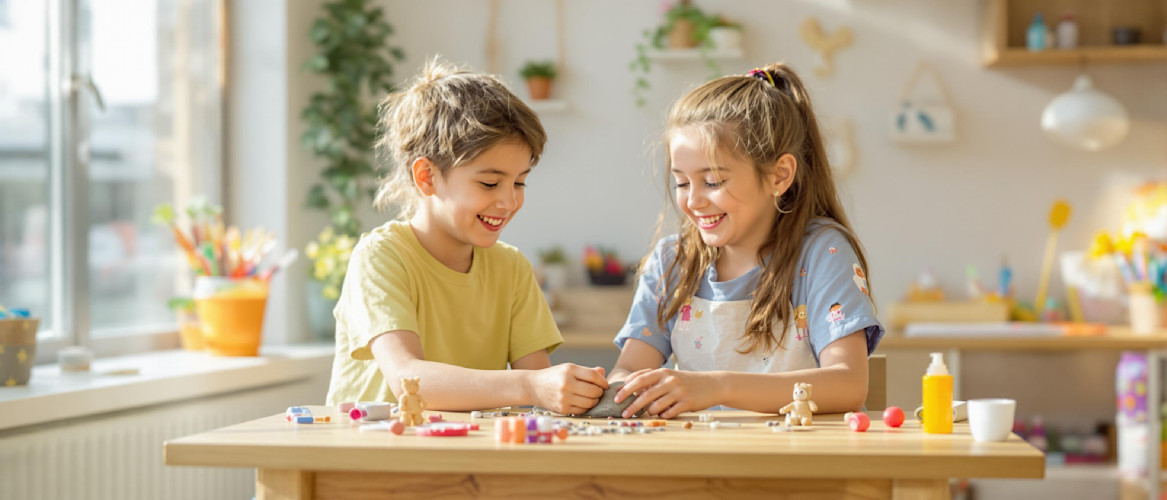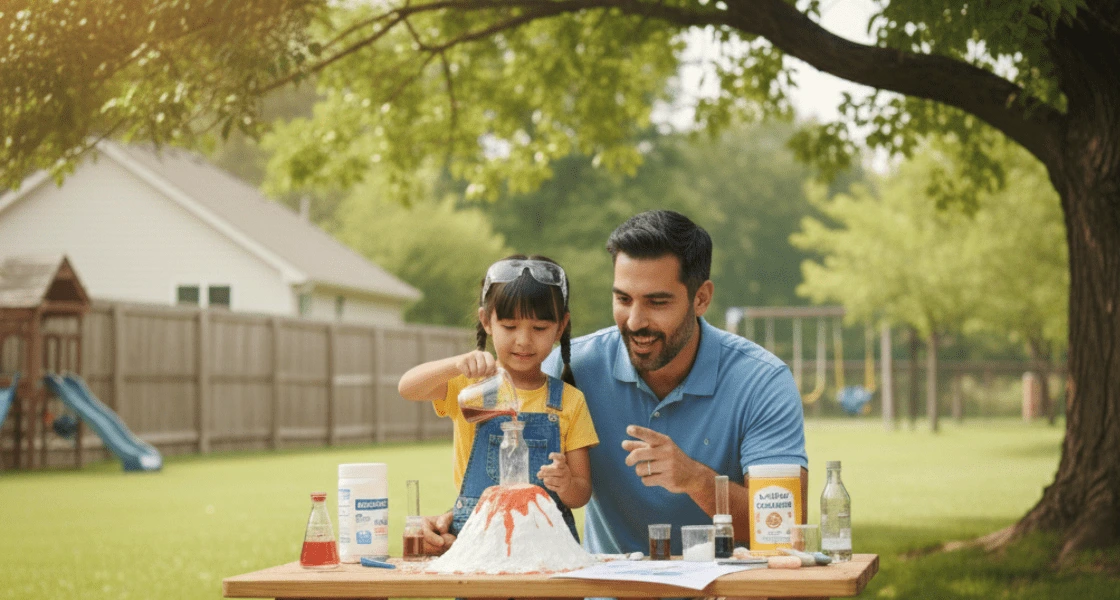Your ten-year-old finishes a chapter on the American Revolution and can’t stop asking big “what if” questions, sparking the lively curiosity at the heart of discussion-based learning. This approach transforms reading into warm, engaging conversations where ideas flourish, assumptions are examined, and questions are just as important as answers.
For homeschooling families, discussion-based learning is a natural way to spark creativity, critical thinking, and confidence through warm, engaging conversations anywhere, whether at the kitchen table, on a nature walk, or in small group settings. Outschool classes make it easy to connect your child with passionate teachers and peers who share their interests, bringing this approach to life in thousands of interactive topics.
Discussion-based learning is more than just talking
Discussion-based learning invites children into warm, engaging conversations that deepen understanding and spark curiosity through guided inquiry. Instead of simply receiving information, children share perspectives, ask questions, and build on each other’s ideas, turning homeschooling into a collaborative space where curiosity drives discovery and both knowledge and communication skills grow naturally.
In homeschool settings, this approach shines even brighter. Families can tailor discussions to their child’s interests and learning style, creating safe, supportive spaces for expressing ideas and exploring new viewpoints. These conversations build confidence, encourage critical thinking, and connect learning to real-life experiences.
Benefits of discussion-based learning
- Helps children blossom from quiet observers into enthusiastic contributors, eager to share their ideas and participate in learning.
- Naturally grows critical thinking skills, helping kids make thoughtful decisions and understand topics more deeply.
- Lifts motivation by making every child feel heard, valued, and encouraged.
- Welcomes every learning style, from talk-it-out thinkers to those who need quiet reflection, so each child can shine.
- Fits beautifully into your family’s rhythm, whether lively breakfast debates or calm evening reflections.
- Builds meaningful bridges between learning and life, making education feel personal and relevant.
- Sparks curiosity with open-ended “what if” questions that invite exploration, creativity, and joyful discovery.
Discussion-based learning activities for kids and teens
These engaging conversation-based activities can transform any homeschool day into an exploration of ideas that spark curiosity and invite multiple perspectives.
- Book clubs and literature circles - Choose age-appropriate novels or picture books and discuss characters' motivations, plot twists, and themes that connect to your family's experiences and values.
- Science debates and hypothesis discussions - Explore "what if" scenarios like "What would happen if gravity were weaker?" or debate topics such as renewable energy solutions, encouraging kids and teens to defend their reasoning with evidence.
- Current events roundtables - Set aside time weekly to discuss age-appropriate news stories, helping your children connect classroom knowledge to real-world events and develop informed opinions.
- Gallery walks and project showcases - Create learning stations around your home or yard where family members present research projects, then rotate through for discussions about discoveries and insights.
- Philosophical chairs and values discussions - Present statements like "Technology makes life better" and have learners physically move to show agreement or disagreement, then explain their reasoning.
- Role-play and historical reenactments - Act out historical events, scientific processes, or literary scenes, then discuss different perspectives and what these experiences teach about empathy and understanding.
How parents can implement discussion-based learning at home
You already have everything you need; just bring your curiosity and care. Your role gently shifts from being the one with all the answers to a warm, encouraging discussion facilitator, walking alongside your children as you explore ideas together.
Here's how to bring discussion-based learning into your daily homeschool routine:
Try shifting from recall questions to curiosity-driven prompts
Instead of "What happened in the story?" ask "What would you have done differently?" or "How might this character's choice affect others?" These open-ended questions invite deeper thinking and personal connection to the material.
Establish simple discussion agreements that encourage risk-taking
Post visible reminders like "Mistakes help us learn" or "Half-ideas welcome here," then model this by sharing your own uncertainties. When children see you wondering aloud or admitting confusion, they feel permission to do the same.
Use visual aids and props to make abstract concepts tangible
Maps for history discussions, science experiments for hypothesis debates, or even family photos can serve as conversation starters that help children connect learning to their world and experiences.
Embrace the power of "I wonder" statements to model lifelong learning
Share your own questions openly: "I wonder why the author chose this ending," or "I'm curious about what would happen if we changed this variable." This demonstrates that learning is an ongoing journey of discovery.
Frequently asked questions (FAQs) about discussion-based learning in homeschool
These common questions address the real challenges homeschooling families face when embracing discussion-based learning.
What if my child is shy or reluctant to speak up?
Start small and meet your child where they are. Shy children often thrive when given time to prepare their thoughts in advance. Try beginning with one-on-one conversations about topics they're passionate about, then gradually introduce structured discussions like "Gallery Walks" where they can move around and engage with prompts at their own pace.
Remember that some children process internally first, so giving them discussion questions ahead of time can help them feel more confident participating.
How can I manage discussions with siblings of different ages or abilities?
Mixed-age discussions can actually be a strength in homeschooling. Older children naturally become mentors while younger ones learn from observing more complex thinking. Create roles that play to each child's strengths: perhaps your younger child shares observations while your older child asks follow-up questions.
For families with neurodiverse learners, consider using visual aids, movement-based activities, or allowing different ways to participate, such as drawing responses. Tools like argument-mapping platforms can help organize thoughts visually and make complex topics more accessible.
Do I need special training to facilitate discussions at home?
You already have the most important qualification, knowing your child and caring about their learning journey. While formal training isn't necessary, you can build confidence by starting with simple techniques like asking open-ended questions and practicing active listening.
Focus on creating a safe space where all ideas are welcome, and remember that your role is to guide the conversation, not have all the answers.
How can I assess learning through discussions instead of traditional tests?
Listen for evidence of critical thinking, such as when your child connects new ideas to previous learning or asks thoughtful follow-up questions. Keep simple notes about insights they share, questions they ask, or moments when they change their thinking based on new information.
You can also have them reflect on their learning by asking what surprised them or what they want to explore further. These conversations often reveal a deeper understanding than any test could measure.
Bring warmth and wonder to your homeschool
Discussion-based learning turns your homeschool into a warm, lively space where curiosity blooms, confidence grows, and understanding deepens through meaningful conversations. It transforms passive listening into active thinking, helping kids connect ideas to their lives while building critical thinking, empathy, and communication skills, strengthening the bonds that make homeschooling special.
Outschool makes bringing this approach to life easy through live, small-group classes led by passionate teachers, sparking curiosity, connection, and a love of learning in your homeschool.


.svg)
.svg)







